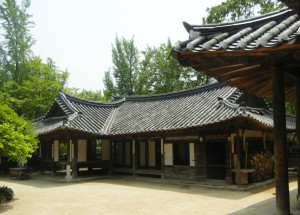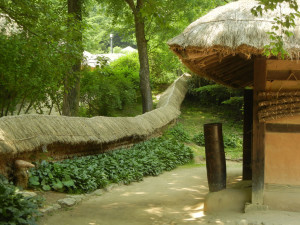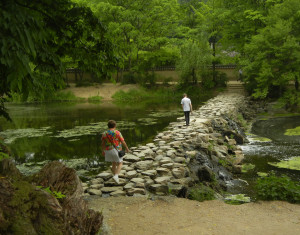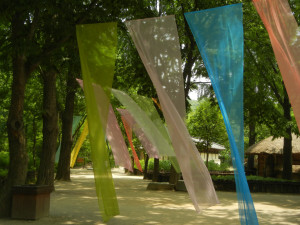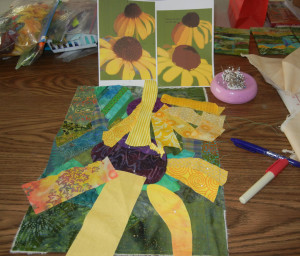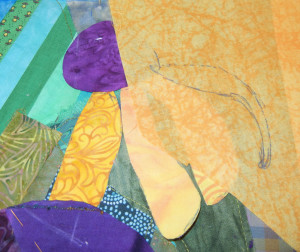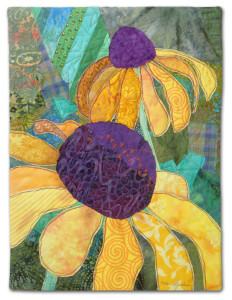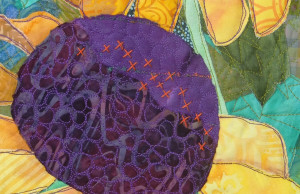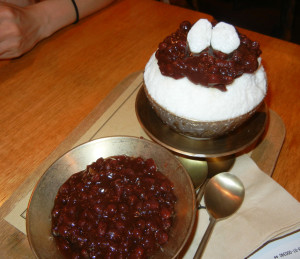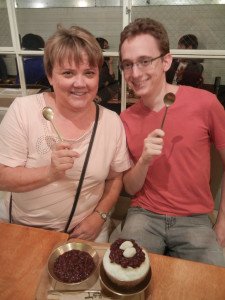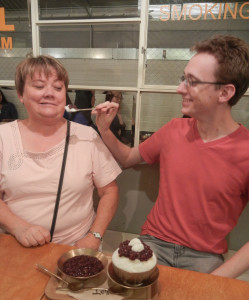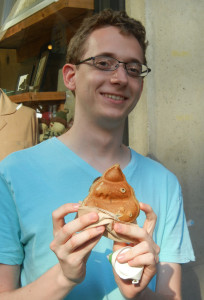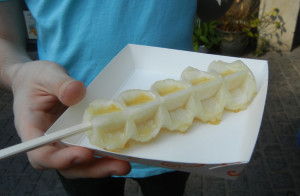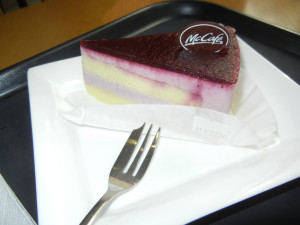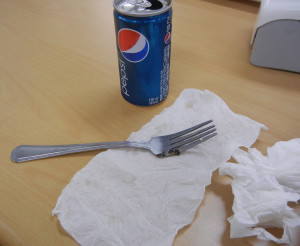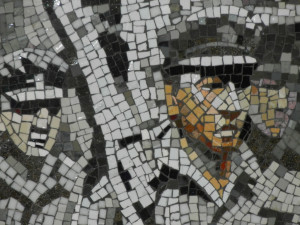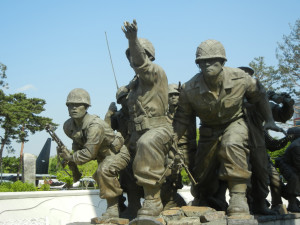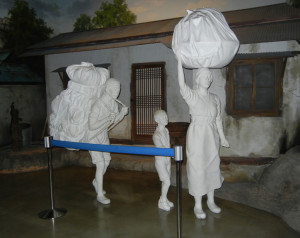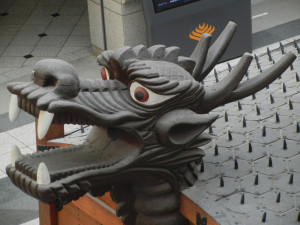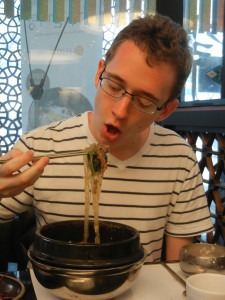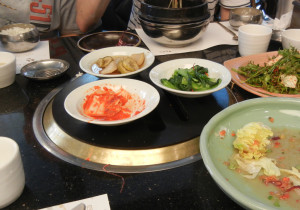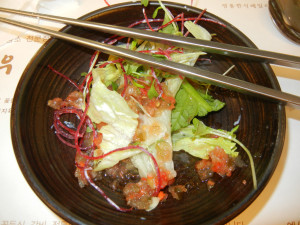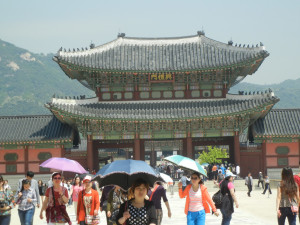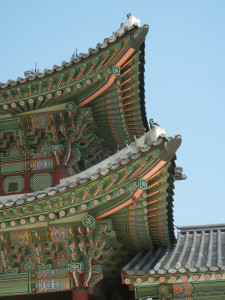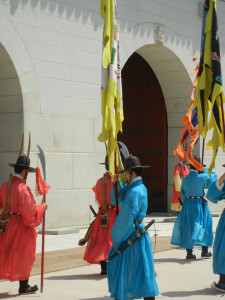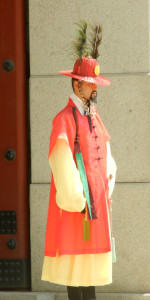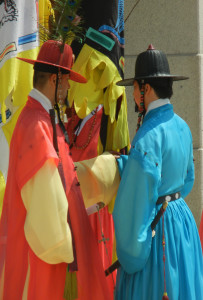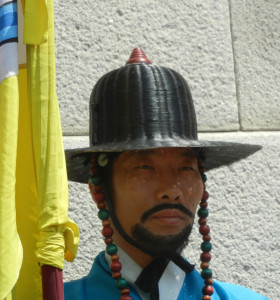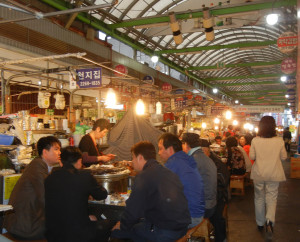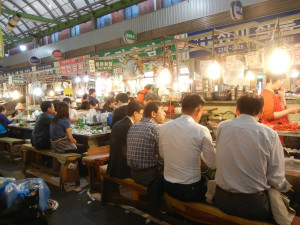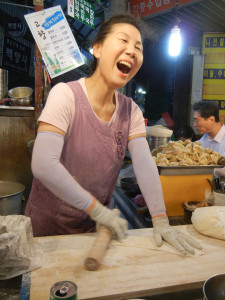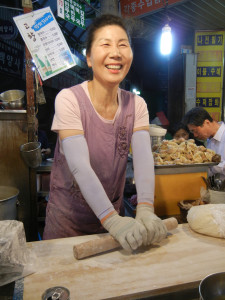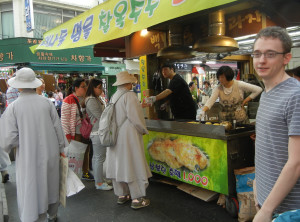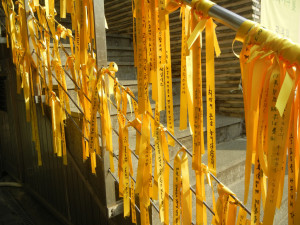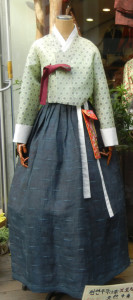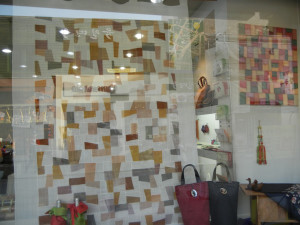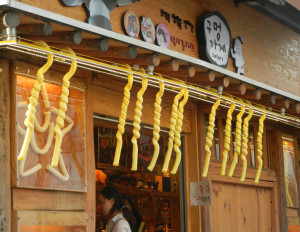Our visit to the Demilitarized zone between North and South Korea was very interesting! We went as part of a tour, which is the only way a private citizen is allowed into the area.

Our journey from Seoul paralleled a major river, which had barbed wire all along it. This was to prevent North Korean refuges from coming across. (Although they’re welcome if they actually make it. A paradox.)
Click any image for a larger view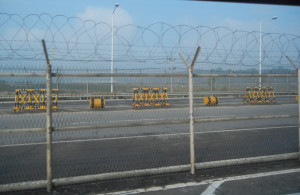
To get to the DMZ, traffic must cross Unification Bridge, which is tightly controlled. Only pre-approved visitors, like those on our tour, some military personnel, and construction type vehicles – like cement mixers – were allowed across. Barricades required vehicles to zigzag at each end.
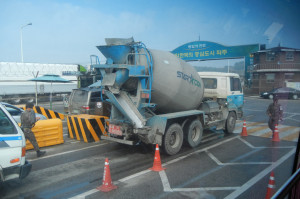
The DMZ was nothing like we expected. We expected a barren wasteland with high fences and guard towers on both sides. And while we did go through a few intimidating fences, once we got to our destination we found a parking lot, buildings, and a forest. This is a model depicting the Joint Security Area, or JSA, at Panmunjom The actual demarcation line is shown with the line of white dots. In reality this is about what they looked like: simple white posts placed every 100′ or so.
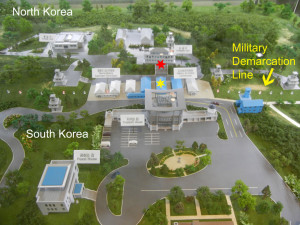
The Republic of Korea (South Korea) is in the bottom of this model, with North Korea at the top. The blue buildings are operated by the UN. Several countries are active here, including the United States, the Republic of Korea, and Switzerland.
An American soldier gave us an excellent briefing, but only after having us sign a scary visitor form.
“…entrance into a hostile area…possibility of injury or death…”
Yeah, that got our attention.

We visited a conference building, indicated with a yellow star in the model photo. It was painted the same blue inside, with the demarcation line running right through the middle. A very intimidating “Rok” soldier (Republic of Korea) stood at the ready. His stance was one of readiness, as used in Tae Kwon Do.

Because we could walk to the far end of the conference room, we can now say that we’ve been to North Korea! Here’s Andrew doing just that. The Roc soldiers allowed you to stand beside them for photography, but only if you stayed at least 6″ away.
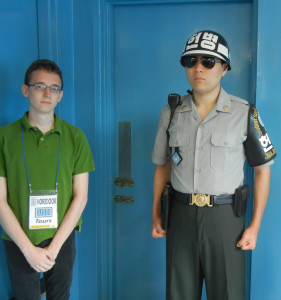
And here’s a photo of the North Korean observation building. There was a North Korean soldier observing us, indicated with a red star on the model photo. We had been instructed not to wave, gesture, or make contact with them in any way. So both sides looked at each other.
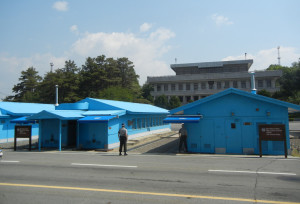
Later, we got a view a little further into North Korea. This VERY large flag (600 pounds) flies on a VERY high tower in what the JSA people call “Propoganda City.” It’s meant to show the south how prosperous the north is. But, in reality, no one actually lives there and most of the buildings have painted-on windows and doors.
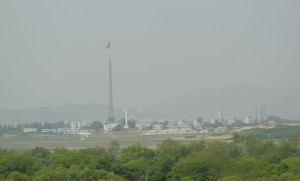
Last on our tour was one of the tunnels the North Koreans have dug as a way to invade South Korea. The steep incline made it easy for me to decide against that trek!
A few more details about the DMZ:
– It’s 4 km wide, 2 km on each side of the demarcation line.
– The irregular line is due in part to the armistice agreement and in part to the fighting that continued for another 12 hours after it was signed.
– People live there! A small South Korean village is within the DMZ. There are many perks to living there, such as a waiver to the mandatory 2 years of military service. However, only people whose ancestors lived in that area are allowed to live there now.
Relations between North and South Korea have fluctuated through the years. Things were pretty good about 10 years ago, with very limited travel allowed from South Korea into the north. Materials and supplies were provided from the south as well. However, the 2008 killing of a South Korean tourist has raised tensions ever since.
As a reminder of better times, the northernmost train station still has signs about the old route. Here’s Kevin posing in front of it.
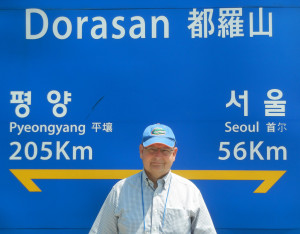
This was a VERY interesting part of our time in Korea!
Ellen Lindner
P.S. The poor visibility seen here is typical of our visit. I was told that it was due primarily to pollen and dust, and a little due to pollution. It was generally worse in the morning.
